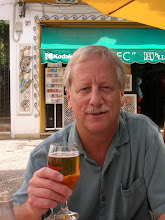I was sitting out on my deck some time ago watching the sunset and across the street behind the trees were a bunch of kids having some sort of get-together. There were probably six yelling at each other most of the time at the same time apparently nobody listening to each other. Very annoying and somehow indicative of our social fabric. I see this as a metaphor for the 24 hour news cycle and public discussion in politics.
Errol Morris recently had a five-part series of articles in the New York Times Opinionator called The Anosognosic’s Dilemma–Something’s Wrong but You Will Never Know What It Is. I’ve read it a couple times. Here is access to it. One idea that I cannot seem to convey to others regards the question of how we can know what we know. Or how much do we know? Or how we can know what we do not know? Or cannot know? I think Nassim Taleb is great and also entertaining on this stuff, particularly in The Black Swan, but below is an observation drawn from a discussion with the fascinating neuroscientist, V.S. Ramachandram:
“In Ramachandran’’s account, then, we are treated to the spectacle of different parts of the brain —— perhaps even different selves —— arguing with one another.
We are overshadowed by a nimbus of ideas. There is our physical reality and then there is our conception of ourselves, our conception of self —— one that is as powerful as, perhaps even more powerful than, the physical reality we inhabit. A version of self that can survive even the greatest bodily tragedies. We are creatures of our beliefs. This is at the heart of Ramachandran’’s ideas about anosognosia —— that the preservation of our fantasy selves demands that we often must deny our physical reality. Self-deception is not enough. Something stronger is needed. Confabulation triumphs over organic disease. The hemiplegiac’s anosognosia is a stark example, but we all engage in the same basic process. But what are we to make of this? Is the glass half-full or half-empty? For Dunning, anosognosia masks our incompetence; for Ramachandran, it makes existence palatable, perhaps even possible.”
Most people seem to find my skepticism unfathomable and depressing if taken seriously. However, as Morris’ discussion points out, the attitude you have is something you choose. I think that this is one of the attractive intellectual elements of buddhist thought. I am an optimist, but I really have no rational basis for this attitude.
This blog morphed out of an e-mail discussion with some friends on the issues of the day. I found, of course, that I am basically a liberal. But I have my conservative sides. Anyone who is on the left must acknowledge the mistakes of past progressive intellectuals, and their incredible hubris, on thinking they had figured it out. But they ended up supporting Stalin, a monster. Here is a favorite part of a poem from Yeats called Slouching Toward Bethlehem. The future may be as dark as anything you can imagine.
TURNING and turning in the widening gyre
The falcon cannot hear the falconer;
Things fall apart; the centre cannot hold;
Mere anarchy is loosed upon the world,
The blood-dimmed tide is loosed, and everywhere
The ceremony of innocence is drowned;
The best lack all conviction, while the worst
Are full of passionate intensity.
Surely some revelation is at hand;
Surely the Second Coming is at hand.
The Second Coming! Hardly are those words out
When a vast image out of Spiritus Mundi
Troubles my sight: somewhere in sands of the desert
A shape with lion body and the head of a man,
A gaze blank and pitiless as the sun,
Is moving its slow thighs, while all about it
Reel shadows of the indignant desert birds.
The darkness drops again; but now I know
That twenty centuries of stony sleep
Were vexed to nightmare by a rocking cradle,
And what rough beast, its hour come round at last,
Slouches towards Bethlehem to be born?
Saturday assorted links
11 hours ago




No comments:
Post a Comment